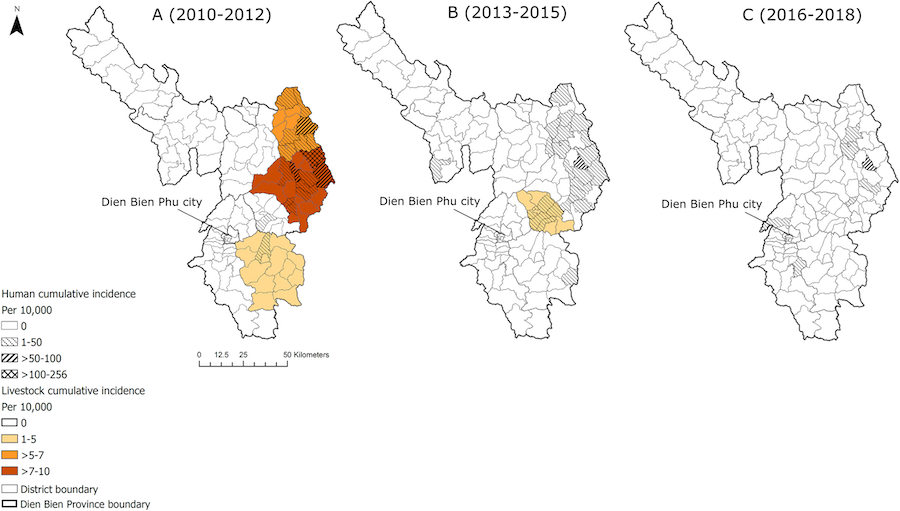
LUONG, WALKER, BLACKBURN – Spatial analysis of human and livestock anthrax in Dien Bien province, Vietnam (2010–2019) and the significance of anthrax vaccination in livestock
Luong Minh Tan, Doan Ngoc Hung, Do Thai My, Morgan A. Walker, Hoang Thi Thu Ha, Pham Quang Thai, Tran Thi Mai Hung, Jason K. Blackburn
Article first published online: 20 December 2022
DOI: https://doi.org/10.1371/journal.pntd.0010942
ABSTRACT: Anthrax is a serious zoonosis caused by Bacillus anthracis, which primarily affects wild herbivorous animals with spillover into humans. The disease occurs nearly worldwide but is poorly reported in Southeast Asian countries. In Vietnam, anthrax is underreported, and little is known about its temporal and spatial distributions. This paper examines the spatio-temporal distribution and epidemiological characteristics of human and livestock anthrax from Dien Bien province, Vietnam from 2010 to 2019. We also aim to define the role of livestock vaccination in reducing human cases. Historical anthrax data were collected by local human and animal health sectors in the province. Spatial rate smoothing and spatial clustering analysis, using Local Moran’s I in GeoDa and space-time scan statistic in SaTScan, were employed to address these objectives. We found temporal and spatial overlap of anthrax incidence in humans and livestock with hotspots of human anthrax in the east. We identified three significant space-time clusters of human anthrax persisting from 2010 to 2014 in the east and southeast, each with high relative risk. Most of the human cases were male (69%), aged 15–59 years (80%), involved in processing, slaughtering, or eating meat of sick or dead livestock (96.9%) but environmental and unknown exposure were reported. Animal reports were limited compared to humans and at coarser spatial scale, but in areas with human case clusters. In years when livestock vaccination was high (>~25%), human incidence was reduced, with the opposite effect when vaccine rates dropped. This indicates livestock vaccination campaigns reduce anthrax burden in both humans and livestock in Vietnam, though livestock surveillance needs immediate improvement. These findings suggest further investigation and measures to strengthen the surveillance of human and animal anthrax for other provinces of Vietnam, as well as in other countries with similar disease context.
Read the full publication at Neglected Tropical Diseases.